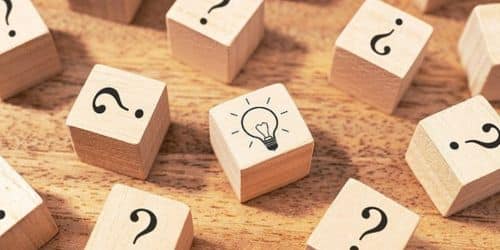We all have a creative side, despite what the general public thinks. Producing that original, clever thing is only one aspect of creativity. The development of the human spirit depends critically on creativity. Using your imagination, creativity, and story to convey a specific idea, emotion, or plot requires creative writing, an expressive form of literature. It defies the limitations imposed by conventional writing styles and is wholly based on our individual preferences and experiences.
Creativity
The ability to approach problems from novel angles and with new viewpoints is what is creativity. Given the breadth and scope of creativity, it is true that you can find it in much more places than on a canvas, in a book, or across a piano keyboard.
Our capacity for creativity inspires us to both create and innovate. The idea that creativity might be among the most valuable qualities a person can possess is not an exaggeration. Creativity is the capacity to go beyond conventional ways of thinking or acting and to create new and unique concepts, procedures, or things. It takes creativity for someone to come up with new ideas.
How to Be More Creative
Gaining knowledge, picking up a skill, and developing a way of thinking are the building blocks of creativity. You can develop your creative abilities by experimenting, exploring, challenging presumptions, using your imagination, and synthesizing data.
Benefits of Creativity
#1. Decreases Stress Level
Similar to how meditation affects the brain, creativity also has a similar effect. You can unwind by getting lost in a creative activity, such as reading, writing, knitting, baking, listening to music, or, yes, even developing a new strategy for a business.
#2. Improves Essential Skills
There are other aspects of creativity besides just coming up with something original. Additionally, it is conducive to the development of crucial abilities we require for success. Eg By coming up with a brand-new way to accomplish an old task or producing something completely original, creative exercises help us improve our problem-solving abilities.
Creativity Museum
For museums and the museum industry, creativity is a topic of great interest and significance. The names, missions, and branding of museums creatively reflect this significance and make it visible. The goals of museums are to encourage and nurture creativity in people and to stimulate it in others.
Exhibits are inspired by the creations of artists in all media. Creativity is seen as a way for museums to stay current and draw visitors. The ability to foster creativity in visitors, students, staff, volunteers, and even entire communities lies within the purview of museums. They are full of items, many of which are the products of the inventiveness of artists, inventors, and innovators.
The lives of their visitors and communities can benefit greatly from the creativity that museums can inspire. However, achieving those opportunities requires significant work that incorporates important concepts into the organization’s daily operations.
Creativity Nails
Numerous people have indulged in the growing trend of nail art. The creative display of miniature works of art that subtly draw attention to one’s nails makes use of abstract colors and patterns. The opportunity to delve into one’s creative mind and learn this complex art of enhancing beauty is provided by investigating the various design techniques used in nail art and décor.
Lego Creativity
The use of Lego bricks is a great way to inspire our children’s creativity. Children can gain so much from playing with LEGO®, both individually and in small groups, and so many amazing ways.
Benefits of Playing with Lego
#1. Creativity and Experimentation
Children can create and tell stories with LEGO® creations, which are a type of art. Children have the chance to play freely with LEGO®, either alone or in pairs, allowing their imaginations, creativity, and self-expression to run wild. When playing with LEGO®, kids can be as daring as they want, giving them the freedom to try out, test out, and construct new concepts.
#2. Patience
Children’s patience may be put to the test when building with LEGO® when a specific piece is difficult to locate. In a world where kids frequently seek instant gratification, the construction process can teach kids that it can take time and effort to get good results.
#3. Physical Development
It is well known that playing with LEGO® has wonderful advantages for the growth of fine motor abilities, increasing finger strength and dexterity. Children’s small fingers benefit greatly from the different pressures used to put together LEGO® pieces because it helps them practice holding a pencil and controlling how much pressure to use when writing.
#4. Mathematical Reasoning, Spatial Awareness, and Problem-Solving
Following directions, figuring out how things fit together, comprehending quantity, symmetry, patterns, and where the bricks have placed all aid in the development of children’s mathematical and spatial awareness skills as well as their ability to problem-solve and generate fresh ideas.
Writing Creativity
Imagination and creativity are the keys to expressing ideas and thoughts in a way that is unique to you in creative writing. Storytelling, playwriting, poetry, prose, journalistic work, and other genres and writing styles are all included in it. It also encompasses a wide range of fields for both fiction and non-fiction writing.
Types of Creative Writing?
There are many different types of creative writing, including various genres and styles. The most common ones include:
- Biographies
- Fictional works include novels, novellas, short stories, etc.
- Speeches
- Written and spoken word art
- Playwriting/scriptwriting
- Individual essays
- Speeches
There will never be a general definition to describe the “perfect” piece of creative writing because it doesn’t fit into any particular genre. Having said that, there are some general guidelines you can adhere to make your creative writing as strong as it can be by being as genuine to you as you can.
Tips for Creative Writing
#1. Write About What You Know.
The best stories are frequently those that we can identify with and relate in some way to our own experiences. Or, they may be tales that seem so true to life that you might believe they are based on the author’s own experiences.
#2. Understand your Audience
Since knowing your audience is essential to truly tailor your writing and connecting with them, all great stories start with one in mind. So before starting to write, every creative writer needs to decide exactly who they want to read their work. When you keep this in mind, your writing will inevitably start to take shape and flow in a way that seems appropriate to your audience.
#3. Creativity is Important
Creative writing requires a lot of creativity, which is one of its key components. It’s what distinguishes your work from others in your genre. Use literary devices like metaphors, alliteration, and different sentence structures to add a creative twist to the familiar and make your writing stand out from the crowd.
#4. Read, read, read.
Without any references to draw from, learning how to write creatively is much more difficult. Excellent examples of well-written creative work have been written by famous authors throughout history, and they ought to be required reading for any aspiring creative writer. To determine where your interests may lie, read well-known works by talented authors in a variety of genres.
#5. Start Writing.
Many beginners experience feelings of embarrassment or intimidation as a result of their creative endeavors and imaginative excursions. You can develop your writing abilities to become a better writer by practicing, writing for fun, and engaging in creative writing exercises.
#6. Attend a Writing Workshop.
Writing workshops and groups introduce you to other authors who can help you with the creative writing process by providing feedback and helpful criticism on a range of aspects of your writing, such as the plot, main characters, setting, and word choice.
#7. Get To Know Yourself as a Writer
The more you write, the more aware you’ll be of your writing style’s advantages and disadvantages. You’ll learn what kinds of characters, scenes, language, and pieces you enjoy writing the most as well as what writing challenges you the most. You can select the projects you want to work on by determining the type of writer you are.
Essential Elements of Creative Writing
The goal of creative writing is to elicit a reaction from the reader using a variety of techniques. It is your responsibility as a writer to carefully consider every one of them. These elements include:
#1. Action
Action in creative writing ought to have a purpose; characters’ deeds ought to be dictated by their motives, worldviews, and prior decisions.
#2. Character
Character development is the art of giving a character in a work of literature a personality, a sense of depth, and motivations that carry them forward in the narrative. The motivations of a character influence their choices and actions, which shapes the narrative arc of the story.
#3. Conflict
Conflict serves as a plot device that advances a narrative. The audience will start to lose interest if there is nothing at risk because then a person’s decisions don’t matter. The tension in your story will be lost if you give your characters everything they desire.
#4. Dialogue
Effective dialogue serves a variety of purposes in creative writing. It establishes the speech patterns and voices of your characters and divulges crucial details without resorting to needless expository language.
#5. Pacing
Pacing refers to how quickly or slowly the reader experiences the story’s progression. A scene’s length and the rate at which you, the author, disperse information are two elements that affect the pacing. In general, dialogue and action scenes move things along quickly, while descriptive passages slow things down. However, slowing the pace of the action down at specific points can also heighten suspense.
#6. Plot
A plot is the series of events that make up a story in creative writing. An inciting incident—a circumstance that motivates the main character to act and start a mission—is where the plot begins. Conflict and tension arise along the way to shape the plot into a narrative arc
#7. Setting
The setting of a story in literature refers to its period, place, and natural surroundings. A setting can be a particular geographic location, a time in history, or a fictional place or universe.
#8. Style
A writer’s method of verbal communication is reflected in their writing. The voice, personality, and general tone used by an author to write a text together form their writing style. The kind of writing done and the audience it is intended for can both affect a writer’s style.
#9. Tension
Tension can be present between characters, as an overarching theme, or as a structural tool, and it is an essential component of both pacing and exposition. The fundamental goal of creating tension in a story is to keep the reader on the edge of their seat.
#10. Literary Devices
Using literary devices like metaphors, similes, and alliteration enhances the imaginative and descriptive aspects of creative writing. Writers use these in a wide variety of ways to enhance the vividness, interest, and engagement of their writing.
What Does It Mean to Have Creativity?
The ability to come up with or recognize concepts, options, or possibilities that could help resolve issues, interact with others, or amuse ourselves and others is referred to as creativity.
What Are the 3 Types of Creativity?
- Deliberate and Cognitive Creativity.
- Deliberate and Emotional Creativity.
- Spontaneous and Cognitive Creativity
What Are Creativity Skills?
Being creative is the capacity to approach a task or a problem freshly or differently, or the capacity to use one’s imagination to come up with novel concepts. You can solve challenging issues or come up with intriguing methods of approaching tasks with creativity.
What Are the 4 Types of Creativity?
According to Arne Dietrich, the four different types of creativity are:
#1. Deliberate and Cognitive Creativity.
Deliberate and cognitively creative people are research-oriented and prefer iterative experiments and investigations to accomplish their creative goals. Possessing a body of knowledge that can be used to combine existing knowledge in novel and creative ways is a crucial component of deliberate, cognitive creativity.
#2. Deliberate and Emotional Creativity.
Deliberate and emotional creativity, which relies on logic and facts while also being emotionally sensitive, is governed by the amygdala and cingulate cortex. People who fit into this category enjoy solitude because it can lead to unexpected flashes of insight and inspiration. Some people find that being still and thinking about their situation helps them to be creative. According to Dietrich, this kind of creativity is intentional and emotional.
#3. Spontaneous and Cognitive Creativity
People who fall into this category of creativity frequently need to divert their attention from the current issue and concentrate on other things. The brain responds to ideas or outside inspiration to produce solutions. Someone who fits this description is said to need time to engage in something else so their subconscious mind can continue to work on the issue.
#4. Spontaneous and Emotional Creativity.
The requirements for spontaneous and emotional creativity are frequently met by great artists, such as painters, writers, and musicians.
What Are the 4 CS of Creativity?
There are four developmental stages of creativity, according to Drs. James C. Kaufman and Ronald Beghetto.
#1. The Mini-C Level of Creativity
Learning inevitably involves creativity. There is creativity involved whenever someone attempts a novel task. When one is creative at the mini-C level, their work may not be ground-breaking, but it is fresh and important to them.
#2. The Little-C Level of Creativity
A development from the mini-c level can be seen in the little-c level of creativity. With useful criticism, improvements are made, and what was produced might be useful to others.
#3. The Pro-C Level of Creativity
When one reaches this level, one can express their creativity in a professional setting. By this time, one would have undergone years of deliberate training and practice.
#4. The Big-C Level of Creativity
The Big-C level individuals will be recorded in history. This level includes a review of one’s entire career and body of work. It then compares that body of work to those of other outstanding contributors to determine where the individual fits in.
What Are the Six Factors of Creativity?
A variety of factors, including learning, originality, experience, motivation, thinking styles, imagination, intelligence, environment, flexibility, and personality, can influence creativity.
Conclusion
You may enjoy clay sculpting, knitting, painting, and doodling. Perhaps you schedule time for gardening, learning new cooking techniques, or traveling to new locations. Maybe you enjoy organizing and cleaning your house, going for mindful walks around your neighborhood, or thinking about your upcoming vacation. Think about how you incorporate creativity into your daily life today. Discover those brief moments to be imaginative, creative, and to be inspired. Who knows, maybe you’ll even make a difference.
Related Articles
- CREATIVITY AT WORK: Examples, Importance & Best Practices
- NEW SKILLS TO LEARN: Best Paying Skills in 2023
- LEADERSHIP VALUES: Importance of Values In leadership
- FREELANCE WORK: What Is, Online Jobs, Resumes, Student & From Home
- LEGO LOGO: What Is The Story Behind “LEGO”?






